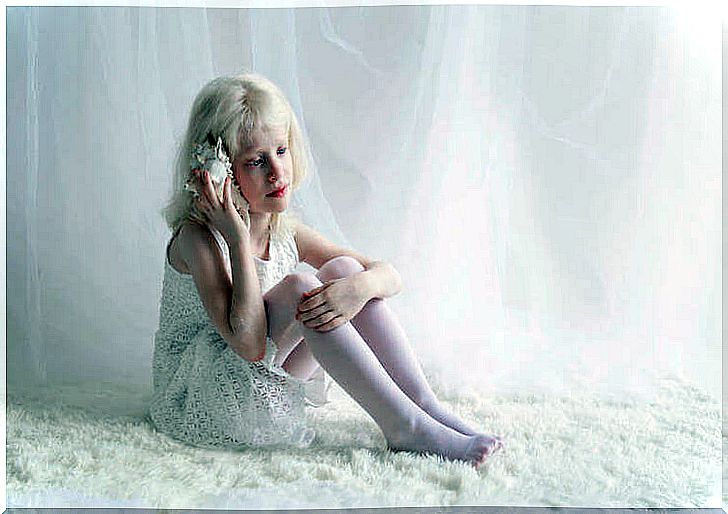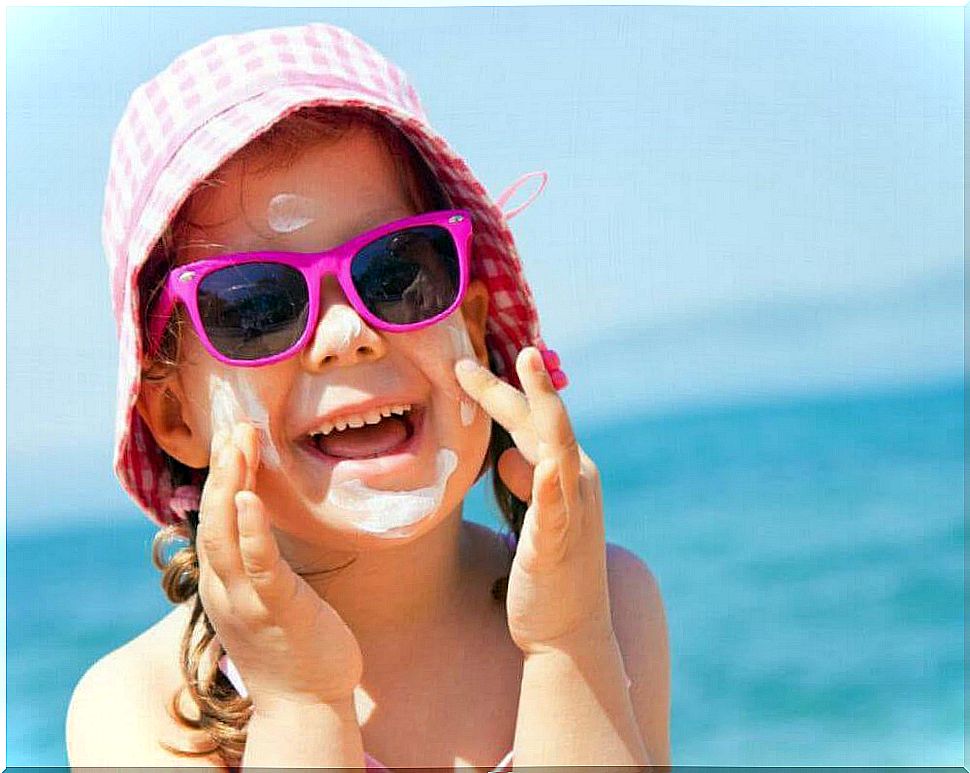Albinism In Children

Albinism in children is a hereditary genetic condition, which is denoted by an excessively light skin tone, very close to white. As you surely know, a child can inherit facial features, hair color, skin, as well as syndromes and more aspects of their parents. Understanding the above is important to differentiate albinism from what would be an ethnic group or race.
Albinism in children, unlike what was explained in the previous paragraph, is not presented as a quality explicitly inherited from one of the child’s parents, but depends on both parents carrying the albinism gene regardless of whether the latter manifest or not albinism, being a gene which is found randomly in some individuals in populations around the world.
This implies that albinism occurs in all ethnic groups, this without distinguishing the skin tone, hair or eyes of the parents.
Characteristics of albinism in children
Melanin involvement
Melanin is a pigment present in our skin and hair, and its natural concentration in the mentioned places determines its tone and color, being a form of pigmentation that also occurs in other living beings.
The absence of melanin
In albinism in children, the mutation by the albino gene is denoted by a total or almost total suppression of melanin production, with which, the lack of this pigment causes an extremely light skin color, limiting with white, The same happens with hair, which is whitish or very slightly blonde.
The eyes that can be black, red, blue or gray, depending on the minimum amount of melanin with which the albino child is born, and for colors without too much pigmentation, they maintain throughout their life a clear iris that is not darkens as we age.
Derived problems in albinism in children
Albinism in children is not a simple skin color condition, but a melanin deficiency that can lead to problems for the child with this condition, this because its little or no presence means the lack of a shield against ultraviolet rays.
Dermatological problems
Given the lack of melanin that would normally appear as a tan to counteract the sun’s rays, children with albinism need to learn from a very young age to protect their skin from the sun, this because unlike their peers, in the case of albinism in children, the Prolonged exposure to the sun’s rays does not translate into a tan, but rather burns, as well as a greater willingness to acquire skin cancer.

Visual problems
Children with albinism can develop serious visual problems, and that are in fact, the problem derived from albinism that can most reduce the quality of life of those who have this condition.
Among the visual problems present in albinism in children we can denote some conditions such as strabismus, foveal hypoplasia, optic nerve with abnormal trajectory, among others. In addition to clear, a marked sensitivity of the eyes to daylight that can prevent a clear focus of vision.
Many people with albinism require ophthalmic glasses as well as sunglasses to move around in brightly lit areas.
Social problems
A problem not related to health, but no less important in many ways, is the social impact that albinism has on the child who suffers from it. It can mainly translate into social stigmatization or marginalization, depending on both cultural factors and the education where the albino child resides.
It should be noted that education and information about albinism in children takes on special importance in poor countries, especially when the population of these countries has a darker skin tone and there is very little ethnic variety.
Notably, many albinos do not take their condition as a disease. Beyond the care of the health conditions described above, albinism in children does not represent a serious health problem that prevents the albino person from leading a normal school life and consequently entering society and the labor market as an adult.
Prevalence
The prevalence of births to children with albinism can vary by geographic area. For example, in Europe, the birth of 1 child with albinism is averaged for every 17,000 births. An example that contrasts the disparity in the prevalence of albinism in children can be contrasted with the African continent, which has very different figures, having 1 birth of an albino child for just every 1500 births, much higher than Europe.










